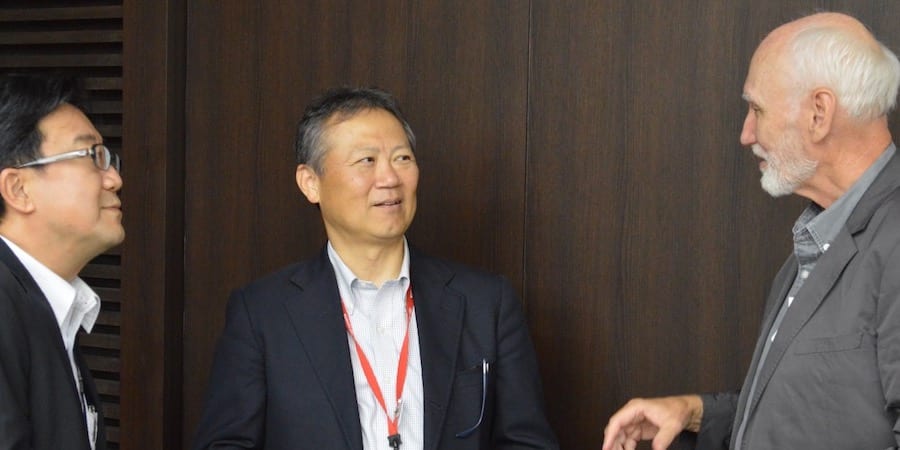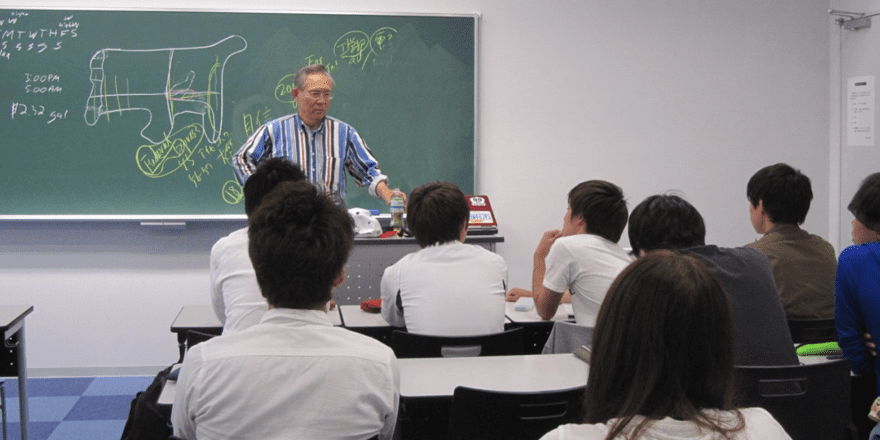
The collaboration equation
FEATURE – In an excerpt from his new book, the author discusses the importance of building collaboration in your teams and explains why this is the only way to consistently deliver value.
Words: Jim Benson

Like all process geeks, I started out as an angry punk rocker in Grand Island, Nebraska. In the late 1970s and early 1980s, my bandmates and I had to learn the music business and how to be a business. We had to learn to play instruments, scream without losing our voices, work audio and recording gear, make tapes, produce albums, ship to foreign countries, build a distribution chain, book venues, promote, build a community, get reviewers to notice us, and come up with messaging. We learned quality production, marketing, and building a brand. We did this in a place where there were significantly few punk rockers and no internet. Punk always said it was DIY (Do It Yourself), but you never met a successful lonely punk. It was really DIT—Do It Together.
We punks are now all old enough to have written several books. Go read them all. Patti Smith, Vivien Goldman, Bob Mould, there’s more than a few. All of them talk about the “I” and the “we”. They all talk about themselves as individuals building something with their teams, their bands. Every last one of them talks about the business, the network, the practical and necessary collaborations that made them who they were then and who they are today. In the end, DIY sounded punk, but DIT got the job done.
GIVING PROFESSIONALS THE TOOLS THEY NEED
Human beings naturally specialize (work alone) in order to collaborate (work together) and vice versa. We rely on collaboration for everything we do. Without fail, every well-run endeavor involves collaboration. Every real collaboration is a system; when people remember the experience, they remember knowing what to do. In this way, collaboration brings its own psychological safety. Collaborators fearlessly sharing leadership as they learn more and get closer to completion. Every real collaboration has the guts to work for real success. Bold collaboration, regardless of complexity, size of team, distribution, or any other excuses people create for their failures to work together, involves people making real commitments to learning, improvement, completion, quality, and making work exciting.
Scale is not an issue. Complexity is not an issue. I’ve built freeways and subways and cities with teams of over 1,000 people, and I wrote Personal Kanban in a one-to-one collaboration with Tonianne DeMaria and every- thing in between. Collaboration scales, solves complexity, and aligns the team. Our fear and excuses that keep us from working together need to be dispelled.
The question is, are we committed to being real professionals?
BEING A COLLABORATIVE PROFESSIONAL
Regardless of whether you are in manufacturing, law enforcement, software development, cookie science, or space exploration: human beings do their work in collaborative systems.
“System” sounds scary, and it often is. We let fetid, frustrating, and flawed ways of working develop over time while we ignore them. They become bloated bureaucracies with no one to care for them.
Our system is how we work. The system generates the work, gives people boundaries of action, defines latitude to improve (or not), supplies the tools with which to work, provides payment for their expertise, and most importantly gives them the ability to solve problems. If we don’t pay attention and build these systems to serve our needs, the system will not serve our needs.
Let’s look at what we’re talking about here:
Collaboration is the act of two or more people working in concert to achieve a goal.
Professionalism is the understanding by these people that their goal has value and with every act they learn more about their goal and how to achieve it in a better way.
Professional Satisfaction is being able to collaborate in a way that satisfies one’s personal needs.
A System is an agreed set of values, interactions, and processes that allow individuals to come together in teams and act in concert to provide value.
If your system does not allow for professionalism or collaboration, you will get neither. Professionalism and collaboration are inextricably linked. Without them, we get:
Anti-Collaboration, which is any system that works at cross purposes to collaboration, professionalism, and/or the creation of value.
Put all these together, and you quickly see flaws in how we work, and possibilities in how we’d rather work. We see where collaboration can increase professional satisfaction and result in better work that we enjoy.
WORKING BETTER AS PROFESSIONALS
In the early 1990s, I was lucky enough to join David Evans and Associates, a consulting engineering company based in Portland. David Evans and Associates3 had barely 100 people. It was stable, known for its quality, and extremely humane. It was a successful environment made up of collaborative professionals. When I left, we were a respected top-50 consulting firm.
At DEA, we had a motto penned by Dave Evans himself.
We take outstanding professionals and give them the tools they need to do an outstanding job.
For a young professional like me, the respect in that statement was powerful. The fact that DEA acted on it so well was astounding. Before tech companies claimed they invented humane benefits like limitless vacation and sick leave or working from anywhere we wanted, we had them. We could put in crazy hours or give ourselves some slack, and always had anyone’s ear. We even became an Employee-Owned Company in the late ’90s to make that commitment self-governed.
DEA’s practical commitment to professionalism meant they would give you what you felt you needed. You would deliver on the exchange, of course, because you are a professional. You would do an outstanding job. David Evans and Associates was a relationship.
The consulting engineering world is interesting because you almost always form interdisciplinary teams to solve client needs. At DEA, we’d routinely team with other companies (the competition) when seeking work. The margins were thin; no one could dominate the market. There were companies that would have winning streaks, but the public procurement process (in ethical states, anyway) meant work was distributed. Steady and healthy competition was always possible because of the historically collaborative system of team contracting.
We would team on huge projects like light rail systems or freeways. Collaborations involved hundreds of people globally back when email was still unknown. And we succeeded, brilliantly and profitably.
DEA understood that each professional in the company was an investment and that every team was a portfolio of value. DEA also understood that professionals are responsible, directed human beings.
Leaving DEA was a difficult decision for me and for the others that joined and left. DEA invested in us, and we did our best to invest in DEA and each other. We were always improving ourselves as professionals: teaching other new things, recommending books, or just talking.
This created an air of psychological safety in the company. Psychological safety is often confused with the ability to openly mention that something is wrong, but it is deeper than that. It is a condition under which any team member can freely operate as a professional in general, and it never comes from working in isolation. It cannot exist without a collaborative and professional system.
David Evans and Associates intentionally built a collaborative, professional company, and by extension a successful company. They did this by creating a culture of collaborative professionalism. DEA made sure that we recognized our role in maintaining our culture as part of our daily work. Since we had control over our professional actions and could succeed only by working well with our colleagues, we frequently had conversations about culture, process, ethics, and action.
Since we had transparency into company operations and its finances, coupled with the trust of upper management, we didn’t have to worry about internal politics. Instead, we could focus on providing quality product to our customers.
That was always the game at DEA. Can we figure out a way to do this better, give the client more, and learn something new while we do it?
PERFORMANCE, COLLABORATION, PROFESSIONALISM
Every high-performing team I have worked with enjoyed high collaboration. It’s the grease on the gears, the charge for the battery, the wind at the back of any successful outcome. At DEA, collaboration was bolstered by the respect the company had for us. They showed their respect by greatly raising our clarity. We knew the finances of the company, we knew every project the company was involved in, we helped projects we were not part of when they had crunches. We were not perfect, but that wasn’t the goal. The goal was to be responsible professionals.
Perfect doesn’t exist; professionalism does.
Collaboration rested on us having the information we needed and the authority to act on that information. Professionalism required us to get other people the information they needed, know when they needed it, and when, even if we had authority, we should work with others. (By the way, it sounds like collaboration is all silk and roses, an idyllic alternate reality where work is beautiful and nothing hurts. Well, that’s not the case. Collaboration can and should be rocky from time to time. Creative tension is necessary.)
WE WORK TOGETHER OR WE DON’T WORK
Collaboration isn’t just working together at a table. It’s working together as a team... different roles, different focuses, but all working towards a common goal. It’s knowing where and when to lend your skills to improving the culture, the product, or the process.
Without collaboration, we become silos of one. Prisons of lazy management. Each person toiling away, making their own numbers, not informing others of important facts, increasingly fighting no-win territory battles with our colleagues, and creating a corporate system laden with the overhead of politics and territory.
Funny thing about territory, it needs to be defended. When some person or some group in a company obtains territory, they need to spend time and resources protecting it. This siloing behavior creates overhead and extremely short-sighted decision making. Your vision isn’t what is possible (bravery); it’s looking for threats (fear).
Historically, we are much more likely to choose defending over tending... because the choices and threats in fighting are clearer. It’s hard to be a good steward of your land: there’s serious work and study involved. It’s much easier to shoot anything that seems like a trespasser.
Silos are the number one indicator of anti-collaborative practices. They slow productive conversations, stifle decision making, crush growth, and create rampant zero-sum games. But we can break that vicious cycle of Engineering versus Marketing versus HR versus etc. We can build low-overhead systems of collaboration that run on good decisions made by informed professionals at the right time.
THE BOLDNESS OF THE COLLABORATION EQUATION
The collaboration equation is: Individuals in Teams Create Value.
In our working lives, we are all faced with a bold choice. We can continue to be inefficient, ineffective piles of pain, shooting at whatever encroaches the boundaries of our petty fiefdoms. Or we can be professionals and work together.9
We can recognize that we’ve hired and are spending considerable money on an army of brains that has judgement, perspective, and potential. We can act on this realization by creating simple systems that allow these professionals to thrive, create value, and grow in worth to themselves, their teams, the company, the customer, and society as a whole.
Too many times, we walk into companies and meet people who require weeks of conversations just to describe how their working systems are hurting them. Many, if not most, of these people will say, “That’s just the way it is around here,” willfully sacrificing their professionalism to a historically unproductive, unrewarding environment. They begin to think that there can’t possibly be anything better.
The working styles of personal insult, embarrassment over delivering shoddy product, political infighting, good decisions rescinded, bad decisions imposed, blame, are all costly, all unnecessary, and all status quo and taught as best practices over time.
We must realize that individuals work in teams to create value and that those individuals are human beings.
You cannot have collaboration without individual human beings. You cannot have a band with different talents. You cannot have a team without professionals looking to support each other.
Collaboration requires attention and work and has its challenges. We will always be dealing with humans, disagreements, and a natural resistance to change. Creating that change is hard work and often frustrating. This is life. Either we care enough to do the work, or we don’t.
But I have to tell you. Every time I’ve seen management write off a team or a division of people, those same people gleefully and professionally create better working conditions for themselves when given the chance. That doesn’t mean lazy conditions: it means they remove the impediments others have placed between them and their team and providing value. Every written-off team in an anti-collaborative environment has always exceeded expectations when they create their own outstanding environment.
We can do better.

In The Collaboration Equation, Jim takes lessons from around the world and very different contexts where real professionals created their own resilient, collaborative teams to create value – turning demotivated co-workers into impassioned professionals. Read this book to understand the basics of building sustainable collaboration and develop the tools to see dysfunction, to align teams around improvement, and to build visual and cultural systems of collaboration and improvement.
Get your copy here.
THE AUTHOR

Read more



INTERVIEW – For its 10th anniversary, the Lean Global Network went to Japan for a study mission. Our editor spoke with John Shook on a Shinkansen platform after four days in Toyota City and Nagoya.


FEATURE – During a visit last month, members of the Lean Global Network were able to witness Coloplast Hungary’s remarkable Lean progress—cutting lead-times, boosting flow, and strengthening a culture of continuous improvement.


RESEARCH - For most CEOs, working with a sensei is common practice. Yet, many questions remain on this role. This paper aims to bring clarity to the "sensei mystery".


INTERVIEW – In this Q&A with Catherine Chabiron, Toyota veteran Isao Yoshino discusses NUMMI, management at the company, and how to change the mindsets of leaders.

